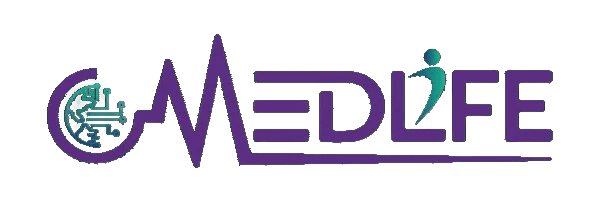Let’s face it, wound care medical billing can feel like navigating a maze blindfolded. Between the ever-changing Medicare requirements and the mountain of documentation needed, it’s enough to make anyone’s head spin! Many providers experience frustration when perfectly legitimate claims get denied. This practical wound care billing cheat sheet will help healthcare providers cut through the complexity and get the reimbursement they deserve.
The Human Side of Wound Care Billing Guidelines
Behind every wound is a patient with a story, and behind every billing code is a provider trying to deliver quality care. The truth is, following wound care billing guidelines isn’t just about getting paid—it’s about creating a record that truly reflects the care provided. When documenting wound care services, providers should think about:
- Telling the wound’s story through detailed assessments (size, depth, appearance)
- Capturing visual evidence with clear photographs when possible
- Explaining clinical reasoning for treatment choices
- Charting the expected healing journey and how the patient is progressing
- Noting how the patient and their caregivers have been educated
Creating standardized templates helps clinical teams capture everything needed without spending precious time reinventing the wheel for each patient. These templates become a safety net when auditors come calling!
Navigating the Medicare Maze
When working with wound care patients for any length of time, it becomes clear that Medicare billing has its own special rulebook. Medicare scrutinizes wound care claims closely not because they don’t want to pay providers, but because these services represent significant healthcare spending.
What Medicare really wants to see:
- Clear evidence that the service was medically necessary
- Documentation that matches the exact treatment being billed
- Justification for frequent debridements (they’re watching these closely!)
- Proper modifier usage that tells the whole story
- Compliance with the regional Medicare Administrative Contractor’s specific rules
Many practices have learned the hard way that different regions have different Local Coverage Determinations (LCDs). Checking these regularly helps stay ahead of the game.
Want to Improve Your Wound Care Billing Process?
Get a free consultation to enhance billing accuracy and accelerate cash flow
TALK TO AN EXPERTSpeaking the Language: Codes That Get You Paid
Choosing the right code is like selecting the right dressing for a wound—it matters! The most frequently used codes in wound care billing include:
- 97597: Debridement (first 20 sq cm)—a bread and butter code
- 97598: Each additional 20 sq cm of debridement
- 11042-11047: The depth-based debridement family of codes
- 15002-15005: When prepping for grafts
- 29581-29584: For multi-layer compression systems
When Advanced Therapies Become Necessary
All providers encounter challenging wounds that don’t respond to standard care. When advanced treatment options are necessary, the billing becomes more complex too. Negative Pressure Therapy (97605-97608) requires documenting previous treatment failures. Cellular/tissue products (15271-15278) face intense scrutiny from payers. Hyperbaric Oxygen (99183) has an authorization process that can be daunting.
Creating a separate checklist for these advanced therapies helps ensure all documentation requirements are met before submission. Nothing’s worse than providing expensive treatment only to have the claim denied!

How Technology Can Lighten Your Load
Investing in good wound care billing software can be a game-changer for practices. The right software doesn’t just help with claims—it transforms the entire billing process. It seamlessly pulls documentation from the EHR to support billing, catches potential problems before claims go out the door, keeps track of which treatments need prior authorization, shows billing patterns that might trigger audits, and adapts to the peculiar requirements of different insurance companies.
When practices upgrade their wound care billing software, clean claim rates can jump significantly. Such improvements often pay for the system within months. For other specialized billing practices, like How to Bill for MRI, CT, Ultrasound, similar technology solutions can streamline processes and improve accuracy.
Avoiding the Denial Heartbreak
There’s nothing more frustrating than providing excellent care only to have the claim denied. The most common denial reasons in wound care practice include medical necessity documentation that doesn’t tell the complete story, missing or incorrectly applied modifiers (especially with multiple procedures), billing separately for services that should be bundled, providing treatments more frequently than the payer considers typical, and using a code that doesn’t match the documentation.
Conducting monthly internal audits works like a regular check-up for billing health. Catching problems before claims go out saves countless headaches and improves cash flow significantly. Practices that implement regular pre-submission reviews often see substantial reductions in denial rates.
Documentation That Works as Hard as You Do
After a long day of patient care, documentation can feel like the last thing providers want to do. But thorough notes are the best defense against denied claims. Measure and record wound dimensions consistently. Describe what is seen—color, drainage, odor, surrounding tissue. Note complications like infection or necrosis that justify treatment choices. Explain how the wound is responding to interventions. Document patient adherence issues that might affect healing.
Outsourcing to Specialized Wound Care Billers
Let’s be honest—not every practice has the resources or expertise to master the intricate world of wound care billing in-house. That’s where specialized medical billing services come into the picture, and they’ve been a lifesaver for many healthcare providers! These dedicated experts live and breathe wound care coding, staying current with every regulatory change and payer policy update.
When practices partner with specialized billers, the difference is often immediate. Denial rates can plummet while revenue cycles accelerate dramatically. These experts catch subtle documentation gaps that might be missed for years and help clinicians improve their notes without adding unnecessary time burdens.
WOUND CARE BILLING CHEAT SHEET: ESSENTIAL CPT CODES
Debridement Codes
| Code | Description | Notes |
| 97597 | Debridement, open wound (first 20 sq cm) | Non-selective debridement |
| 97598 | Debridement, each additional 20 sq cm | Use with 97597 |
| 11042 | Debridement, subcutaneous tissue (first 20 sq cm) | Selective debridement |
| 11045 | Debridement, subcutaneous tissue (each additional 20 sq cm) | Use with 11042 |
| 11043 | Debridement, muscle and/or fascia (first 20 sq cm) | Selective debridement |
| 11046 | Debridement, muscle (each additional 20 sq cm) | Use with 11043 |
| 11044 | Debridement, bone (first 20 sq cm) | Selective debridement |
| 11047 | Debridement, bone (each additional 20 sq cm) | Use with 11044 |
Application & Dressing Codes
| Code | Description | Notes |
| 29581-29584 | Multi-layer compression system application | Location specific |
| 15271-15278 | Application of skin substitute grafts | Site and size specific |
| 97605 | NPWT, ≤ 50 sq cm | Negative Pressure Wound Therapy |
| 97606 | NPWT, > 50 sq cm | Negative Pressure Wound Therapy |
Evaluation Codes
| Code | Description | Notes |
| 99202-99205 | New patient office visit | Level depends on complexity |
| 99212-99215 | Established patient office visit | Level depends on complexity |
| 99241-99245 | Outpatient consultation | When requested by another provider |
This wound care billing cheat sheet is provided for informational and educational purposes only. The information contained herein reflects general billing guidance as of the publication date and should not be construed as legal, financial, or coding advice. Providers are encouraged to consult certified coding specialists, compliance officers, or legal counsel for specific coding and billing questions related to their practice, similar to what is outlined in the Dermatology Billing Cheat Sheet.


